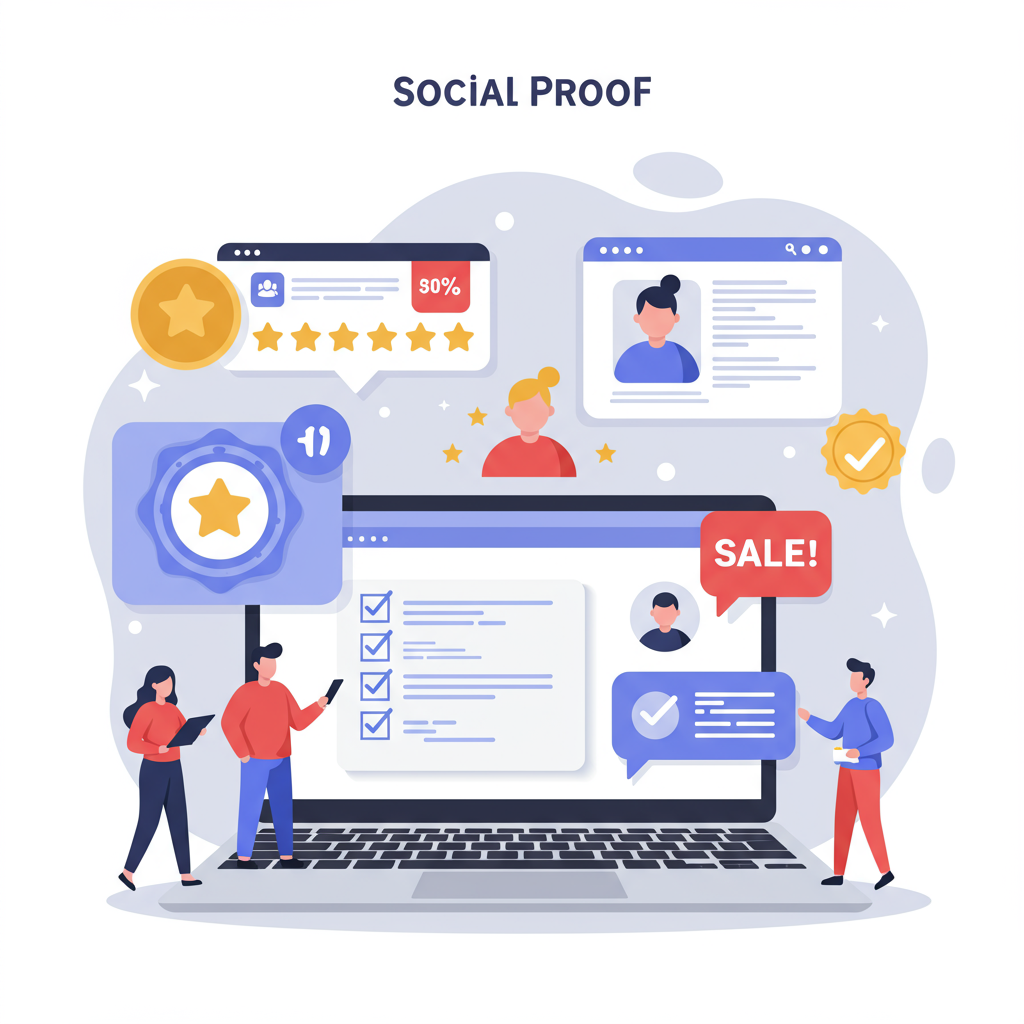My Guide to Leveraging Trust and Credibility for E-commerce Success
As a Shopify merchant, I’m constantly looking for ways to enhance my store’s performance and build stronger connections with my customers. One strategy that has consistently proven invaluable is leveraging social proof.
You might be wondering, “What exactly is social proof?” In simple terms, it’s the psychological phenomenon where people assume the actions of others in an attempt to reflect correct behavior for a given situation.
Think about it: when you’re shopping online, aren’t you more likely to buy a product that has hundreds of positive reviews compared to one with none? That’s social proof in action.
For e-commerce, and especially for us on Shopify, social proof is not just a nice-to-have; it’s a fundamental pillar for building trust and credibility in a crowded online marketplace.
When potential customers land on your store, they’re often skeptical. They don’t know you, and they don’t know your brand. Social proof acts as a powerful third-party endorsement, bridging that trust gap.
I’ve seen firsthand how incorporating various forms of social proof can significantly impact conversion rates, reduce bounce rates, and ultimately, drive more sales. It’s about showing, not just telling.
So, what are the different types of social proof we can implement using widgets and apps on our Shopify stores? Let’s dive into the most effective ones.
**Customer Reviews and Testimonials:** This is arguably the most potent form of social proof. Real feedback from real customers provides authentic insights into product quality and customer satisfaction.
I always recommend prioritizing collecting reviews. Apps like Loox, Yotpo, or Judge.me make it incredibly easy to automate review requests and display them beautifully on product pages.
**Sales Notifications/Recent Purchases:** These small pop-ups that appear on your store, showing “Someone in [City] just bought [Product],” create a sense of urgency and popularity.
They tap into the Fear Of Missing Out (FOMO) and the bandwagon effect. Apps like Sales Pop Up or Fomo are excellent for this, showing real-time activity.
**Visitor Count/Live Viewers:** Displaying how many people are currently viewing a product or your store can also create urgency and signal popularity. “X people are viewing this product right now!”
While some find this aggressive, I’ve found it effective for popular items, especially during sales events. Just ensure the numbers are genuine.
**Trust Badges and Certifications:** These are visual cues that reassure customers about the security of their transactions, your store’s legitimacy, or your commitment to quality.
Think about “Secure Checkout,” “Money-Back Guarantee,” “Free Shipping,” or even industry-specific certifications. These build confidence before a purchase.
**User-Generated Content (UGC):** This goes beyond just reviews. It includes customer photos, videos, and social media posts featuring your products. It’s incredibly authentic and relatable.
Integrating Instagram feeds or allowing customers to upload photos with their reviews can be a game-changer. It shows real people enjoying your products.
**Social Media Mentions and Follower Counts:** If your brand has a strong social media presence, showcasing your follower count or recent mentions can add another layer of credibility.
It demonstrates that your brand is active, engaging, and has a community around it.
**Expert Endorsements/Media Mentions:** If your products have been featured in reputable publications or endorsed by influencers, displaying these logos or quotes can significantly boost your authority.
Now, how do we actually implement these on Shopify? The Shopify App Store is your best friend. It’s packed with specialized apps for each type of social proof.
When choosing an app, I always consider a few factors: its features, pricing (free plans are great to start!), ease of integration, and crucially, its reviews from other Shopify merchants.
Don’t just install the first one you see. Read reviews, check out their demo stores, and see if it aligns with your brand’s aesthetic and needs. Many offer free trials, which I highly recommend utilizing.
My personal advice for using social proof effectively is to always prioritize authenticity. Fake reviews or inflated numbers will do more harm than good in the long run.
Also, don’t overwhelm your customers. A few well-placed, impactful social proof elements are far better than a cluttered page full of pop-ups.
Test different placements and types of social proof to see what resonates best with your audience. A/B testing can provide valuable insights into what drives conversions for *your* specific store.
Remember to regularly monitor and update your social proof. Fresh reviews and recent sales notifications are always more impactful than outdated ones.
I’ve found that a combination of review widgets, a subtle sales pop, and clear trust badges works wonders for most stores. It creates a comprehensive trust ecosystem.
What do you think about these strategies? Have you implemented social proof on your Shopify store, and what has been your experience? I’d love to hear your thoughts!
In conclusion, social proof widgets are an indispensable tool for any Shopify merchant looking to build trust, reduce customer skepticism, and significantly boost their sales.
By strategically implementing authentic social proof, you’re not just selling products; you’re building a community and a brand that customers can truly believe in. Start experimenting today!






